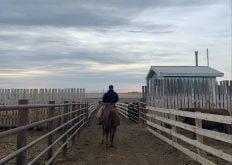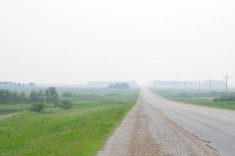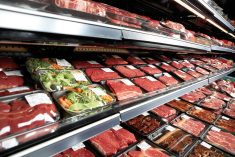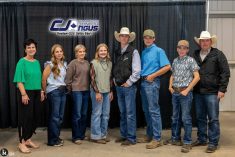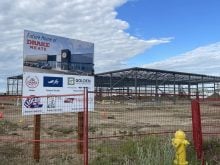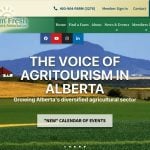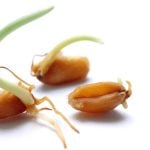When I arrived at the Melfort Research Station in Saskatchewan on September 17, 1973, my first job was to draw up plans for a large bale feeder. Thus, I started my career as a forage beef system researcher. In those days the scientists and staff at Melfort and visiting engineers from Ottawa were involved with a large-scale project evaluating machinery involved in hay harvesting to develop low-cost systems for cow-calf producers.
After 35 years this is what I have learned.
1. There is no such thing as poor-quality hay
Read Also
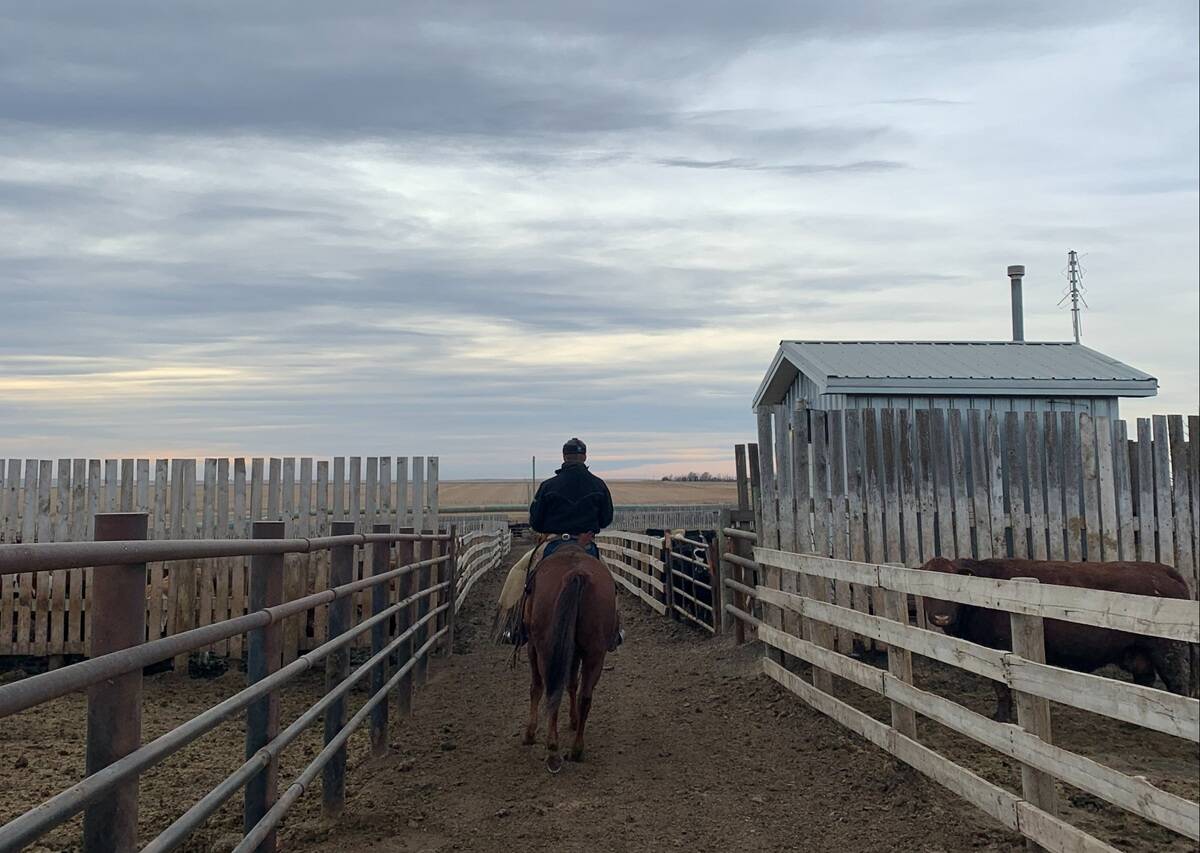
Pen riders still better than tech at detecting respiratory disease in feedlot cattle, says researcher
Recent research found that pen riders are better than tech at flagging signs of BRD in feedlot cattle
If hay is cut at the 10 per cent bud stage, provided it doesn’t rain before the hay is baled, there is no valid reason to have poor-quality hay. Traditionally many producers left their hay until full maturity before harvesting, thinking that they would have more yield but the feeding value was actually reduced by a large percentage. Our research showed the highest probability of rain is during the middle of June just when it is prime hay harvesting time. It is advisable to cut hay earlier before the rain and then have available regrowth for a second cutting or late grazing. Round bale silage is another alternative that we have successfully evaluated.
2. Hay storage losses really hurt your bottom line
Our research demonstrated that soft-and hard-core round bales are the best system for hay harvesting. All the other systems we tested didn’t last because of labour requirements, capital cost per unit of storage, and inability to counteract weathering conditions. Hay losses in the storage yard can be 30 per cent or greater if the hay is improperly stored. A couple of tips we found were to store hay on well-drained sites, preferably with a gravel base. A large percentage of hay loss occurs at the surface where the bales touch the ground or each other, especially at the butt ends. In some cases bales were stored on tires or corral rails to prevent ground moisture contact.
If hay and straw bales are to be held over until the following summer, an air space around the entire bale is essential to avoid significant rot. This can be a big problem if bales are left touching each other as they come off the bale delivery truck. It’s advisable to realign the bales in long rows to provide this air space.
3. Feeding losses are costly
Over the years we’ve looked at every conceivable method of feeding round bale hay and straw. This includes tombstone feeders from England and various upright and angled hay feeders found in Western Canada. None of these prevented cows from raising their heads and pulling straw and hay onto the ground. However, there is a solution. The cone style round bale feeder developed in Pennsylvania (see picture) has been shown to be the most efficient design. I tried to import these feeders into Western Canada but the freight cost was prohibitive. Perhaps some enterprising individuals could manufacture this style of feeder under an agreement with the American company. I really believe that this style of feeder could revolutionize the feeding systems.
Current research at the Agriculture and Agri-Food Canada Research Centre in Lacombe in conjunction with Alberta Agriculture has shown major feeding loss occurs when feeding on snow. This loss which is mostly the high-quality fine particles of high nutritional value can be virtually eliminated by feeding in a portable feed bunk in the field. In some cases 25 per cent of the nutritional value of the feed provided was lost in the snow, resulting in more feed being required to meet the needs of the cattle. The feed bunks can be paid for in a year.
4. Straw is a valuable feed. Use it
Back in September 1973 when I arrived at Melfort the sky would be aglow at night from farmers burning straw. Over the years considerable research was done on efficient ways of feeding straw. One of the most interesting experiments was a straw tasting preference test where we actually measured which type of straw cows preferred. Each day nine different kinds of straw were placed in round bale feeders in a field. Each day the location of the individual bale was changed so that the cows had to find which straw they preferred. At the end of the study, cows preferred the finer two-row barley straw over all other types. Interestingly, we found they really liked finely ground
flax shives, a byproduct of the flax fibre industry.
Pregnant beef cows can successfully winter on any kind of straw and supplements with five to six pounds of dry matter equivalents of good-quality hay or silage or barley. You can feed any type of straw and it isn’t necessary to feed both hay or barley silage and grain unless it gets below -20for long periods of time. Save your grain for after calving. That’s when the cow really needs the extra energy.
5. Winter grazing really pays
I started to evaluate winter swath grazing at Melfort back in the early 1990s. I had a friend in Vegreville who was doing it through the local forage association. At the time, we really wondered if cows would successfully winter in two feet of snow at Melfort. Over the years the research at Melfort and the Western Forage Beef Group at Lacombe has shown that winter feeding and labour costs can be reduced by about 45 per cent compared to providing stored feed. Farmers all across Canada have adapted some form of this winter grazing research to lower their costs.
6. Extend your grazing season
In 1975 we established the Pathlow project to evaluate different methods of improving productivity on rough land pastures and extend the grazing season in the Aspen Parkland. The Saskatchewan Horned Cattle Trust Fund gave us a $150,000 grant to purchase 273 Hereford heifers and the Saskatchewan Lands Branch gave us 1 sections of land at the Pathlow Community Pasture southwest of Melfort. Over the years we developed one of the first “Pasture to Plate” forage beef management systems for cattle producers. The purpose was to develop low cost grazing and winter management systems for beef producers. We evaluated crossbreeding, rotational grazing, reseeding pastures to more productive species, the use of fertilizer, sod seeding, forage varieties, brush management on pasture lands and many different methods for wintering beef cows. The extension of the grazing season in both spring and fall was our primary concern.
7. You don’t have to break and reseed to increase productivity
Over the years, different Pathlow paddocks were broken and reseeded to Russian wild rye, crested wheatgrass, meadow brome and alfalfa. We found Russian wild rye wouldn’t compete with the existing seed bank of Kentucky bluegrass while crested wheatgrass provided about 10 days to two weeks of early grazing in the spring and another two weeks of extended grazing in the fall. Crested wheatgrass needs to be grazed right down in the spring in order to prevent seed production then the regrowth is left for late fall grazing.
With time we found most reseeded pastures reverted back to the original species previously found in the pasture because of their large seed bank in the soil. If it’s desirable to change the species then growing a crop of oats or barley for grazing or grain for a couple of years might reduce the effect of the grass seed bank on future rejuvenation efforts.
The economic merits of breaking and reseeding existing pastures are questionable unless brush control is the primary objective. One low-cost alternative that worked for us was to rest depleted or worn-out pasture until late September. We followed this practice for a number of years and the pasture developed into a very productive forage stand. With the rest from grazing the root mass of the pasture increases and some plants set seed eventually propagating new plants.
8. Every day you graze too early in the spring you loose three days in the fall
Basically there is a similar amount of biomass above ground as below ground. When pastures are grazed first thing in the spring when the grass is very short plants are unable to develop new roots and it is the root system that drives the system. The more root mass you have, the more forage production. To alleviate this situation, a particular grazing paddock should be dedicated to early spring grazing. This pasture should then be allowed to rest during the remainder of the growing season before being grazed again. Early spring pasture should be rotated to another pasture each spring.
Fertilizing with 80 pounds of actual N and 40 of P and 10 of S in the fall allowed us to to graze about two weeks earlier in spring and produce 2.5 times more forage to provide additional carrying capacity over the summer and two additional weeks of grazing in the fall. The benefit of the fertilizer carried over into next year’s grazing season.
Seeding crested wheatgrass or meadow brome grass is another way to provide early spring grazing.
9. Extending fall grazing with annual cereals is a viable alternative
Spring seeded oat, barley, fall rye, winter wheat, winter triticale, or Italian ryegrass can be used for mid-summer, late fall and early winter grazing. Oats or barley can be grazed in early summer, spring seeded fall crops and Italian ryegrasses are available for mid to late fall. In a rotational grazing system, the regrowth from all of these crops is available for late fall and early winter grazing.
Overall, Italian ryegrass will produce the most forage biomass of all the cereals. When choosing a cereal variety for grazing, pick the one with the highest grain production for your agronomic region. A combination of these annual cereals can also be grown as an intercrop with silage. Cut the silage early and the regrowth will be available for fall grazing.
10. Yes, we will have drought
Managing livestock watering sources and soil moisture for plant growth will be one of the most important factors in the future. The majority of the yearly pasture production will be occurring by July 1 in the southern Prairies and July 15 in the Aspen Parkland region of Western Canada. Thus, producers need to assess future grazing capacity or hay supplies at this time and plan for an alternative strategy if production will not meet the grazing stocking and buying hay might be costly options if done later in the season.
Streambank and dugout management are particularly important from an environmental point of view and for livestock production. Once research showed cattle can drink more, and thus gain more, when they drink from a trough rather than from a dugout, various low-cost pumps were developed to draw water from streams or dugouts.
Snow trapping around dugouts in bush regrowth or using portable snow fences can increase the volume of water captured in dugouts. If you have leaking dugouts, a layer of straw and clay spread over the frozen surface in late fall helps seal the leak provided the cattle are kept out of the dugout from then on. As the straw decays it forms a gray gel that eventually forms a seal.
11. Fall grazing reduces winter feed costs
Over the years our weaned cows put on extra backfat and body condition while grazing high-quality Italian ryegrass or spring seeded annual winter cereal or oat and barley regrowth pasture in late October and early November. In addition to the cost saving through extended grazing as opposed to feeding stored feed we didn’t have to supply extra feed prior to calving. The cows were able to utilize their extra body condition during the third trimester. The key was that by feeding cows a high plain of nutrition between calving and breeding they consistently bred within a 42-day breeding season. If winter feed supplies are short, cows that are in good to excellent body condition in the fall can successfully winter on reduced feed for a couple of winters but not on a continual basis.
12. I have also built a lot of fences and corrals
When I was in graduate school back at the Ontario Agricultural College in Guelph, I looked at the feasibility and economics of feeding cattle on slatted floors versus straw bedding in a pole barn or an outdoor feedlot which was basically unheard of in Ontario at that time. I had worked in Alberta the previous summer and wanted to see if the western style of feedlot management could be adapted to Ontario’s conditions. During the actual construction of my various feedlot facilities, I gained considerable experience in hand digging post holes in a gravel soil with boulders the size of soccer balls.
Later at Melfort we built a large cattle wintering facility consisting of eight large research pens surrounded by a 12-foot high porosity fence. We added the extra height on the windbreak to increase the effect of the reduced air flow on the cattle. Agricultural engineers brought their wind gauges and we were able to demonstrate the benefits.
With the increased height we used old telephone poles, and my canoe and moose hunting partner’s father-in-law who happened to be in the power line construction business taught me the correct way to plant a post — use the existing soil from the hole and really tamp the bottom 12 to 18 inches. The next third of the hole was filled with the existing material and lightly tamped while the final third of the hole was heavily tamped. Now that’s how you plant a fencepost that will never move. I really cringe when I see people using sand or gravel to fill around their post holes today.
Over the years I have also repaired many fences, corrals and windbreak fences. In most cases, the corral rails or boards have rotted at the nail. Use galvanized nails even if you have to special order them and your corrals and windbreak fences will last for years.
The other practical fencing tip I received was how to build a proper corner brace. Traditionally people have used an eight foot post for their horizontal cross brace. Research at Kamloops showed that a single 12-foot horizontal cross brace was the strongest and most efficient way to build a corner post brace. In these challenging economic times it will be essential for the survival and sustainability of the beef cattle industry to lower costs of production. Considerable research has been done across Canada and the research on forage beef systems has been summarized on Take a look at it!
Overall, Italian ryegrass will produce the most forage biomass of all the cereals. When choosing a cereal variety for grazing, pick the one with the highest grain production for your agronomic region. A combination of these annual cereals can also be grown as an intercrop with silage. Cut the silage early and the regrowth will be available for fall grazing.
10. Yes, we will have drought
Managing livestock watering sources and soil moisture for plant growth will be one of the most important factors in the future. The majority of the yearly pasture production will be occurring by July 1 in the southern Prairies and July 15 in the Aspen Parkland region of Western Canada. Thus, producers need to assess future grazing capacity or hay supplies at this time and plan for an alternative strategy if production will not meet the grazing needs.De-stocking and buying hay might be costly options if done later in the season.
Streambank and dugout management are particularly important from an environmental point of view and for livestock production. Once research showed cattle can drink more, and thus gain more, when they drink from a trough rather than from a dugout, various low-cost pumps were developed to draw water from streams or dugouts.
Snow trapping around dugouts in bush regrowth or using portable snow fences can increase the volume of water captured in dugouts. If you have leaking dugouts, a layer of straw and clay spread over the frozen surface in late fall helps seal the leak provided the cattle are kept out of the dugout from then on. As the straw decays it forms a gray gel that eventually forms a seal.
11. Fall grazing reduces winter feed costs
Over the years our weaned cows put on extra backfat and body condition while grazing high-quality Italian ryegrass or spring seeded annual winter cereal or oat and barley regrowth pasture in late October and early November. In addition to the cost saving through extended grazing as opposed to feeding stored feed we didn’t have to supply extra feed prior to calving. The cows were able to utilize their extra body condition during the third trimester. The key was that by feeding cows a high plain of nutrition between calving and breeding they consistently bred within a 42-day breeding season. If winter feed supplies are short, cows that are in good to excellent body condition in the fall can successfully winter on reduced feed for a couple of winters but not on a continual basis.
12. I have also built a lot of fences and corrals
When I was in graduate school back at the Ontario Agricultural College in Guelph, I looked at the feasibility and economics of feeding cattle on slatted floors versus straw bedding in a pole barn or an outdoor feedlot which was basically unheard of in Ontario at that time. I had worked in Alberta the previous summer and wanted to see if the western style of feedlot management could be adapted to Ontario’s conditions. During the actual construction of my various feedlot facilities, I gained considerable experience in hand digging post holes in a gravel soil with boulders the size of soccer balls.
Later at Melfort we built a large cattle wintering facility consisting of eight large research pens surrounded by a 12-foot high porosity fence. We added the extra height on the windbreak to increase the effect of the reduced air flow on the cattle. Agricultural engineers brought their wind gauges and we were able to demonstrate the benefits.
With the increased height we used old telephone poles, and my canoe and moose hunting partner’s father-in-law who happened to be in the power line construction business taught me the correct way to plant a post — use the existing soil from the hole and really tamp the bottom 12 to 18 inches. The next third of the hole was filled with the existing material and lightly tamped while the final third of the hole was heavily tamped. Now that’s how you plant a fencepost that will never move. I really cringe when I see people using sand or gravel to fill around their post holes today.
Over the years I have also repaired many fences, corrals and windbreak fences. In most cases, the corral rails or boards have rotted at the nail. Use galvanized nails even if you have to special order them and your corrals and windbreak fences will last for years.
The other practical fencing tip I received was how to build a proper corner brace. Traditionally people have used an eight foot post for their horizontal cross brace. Research at Kamloops showed that a single 12-foot horizontal cross brace was the strongest and most efficient way to build a corner post brace. In these challenging economic times it will be essential for the survival and sustainability of the beef cattle industry to lower costs of production. Considerable research has been done across Canada and the research on forage beef systems has been summarized on www.foragebeef.ca.Take a look at it!


